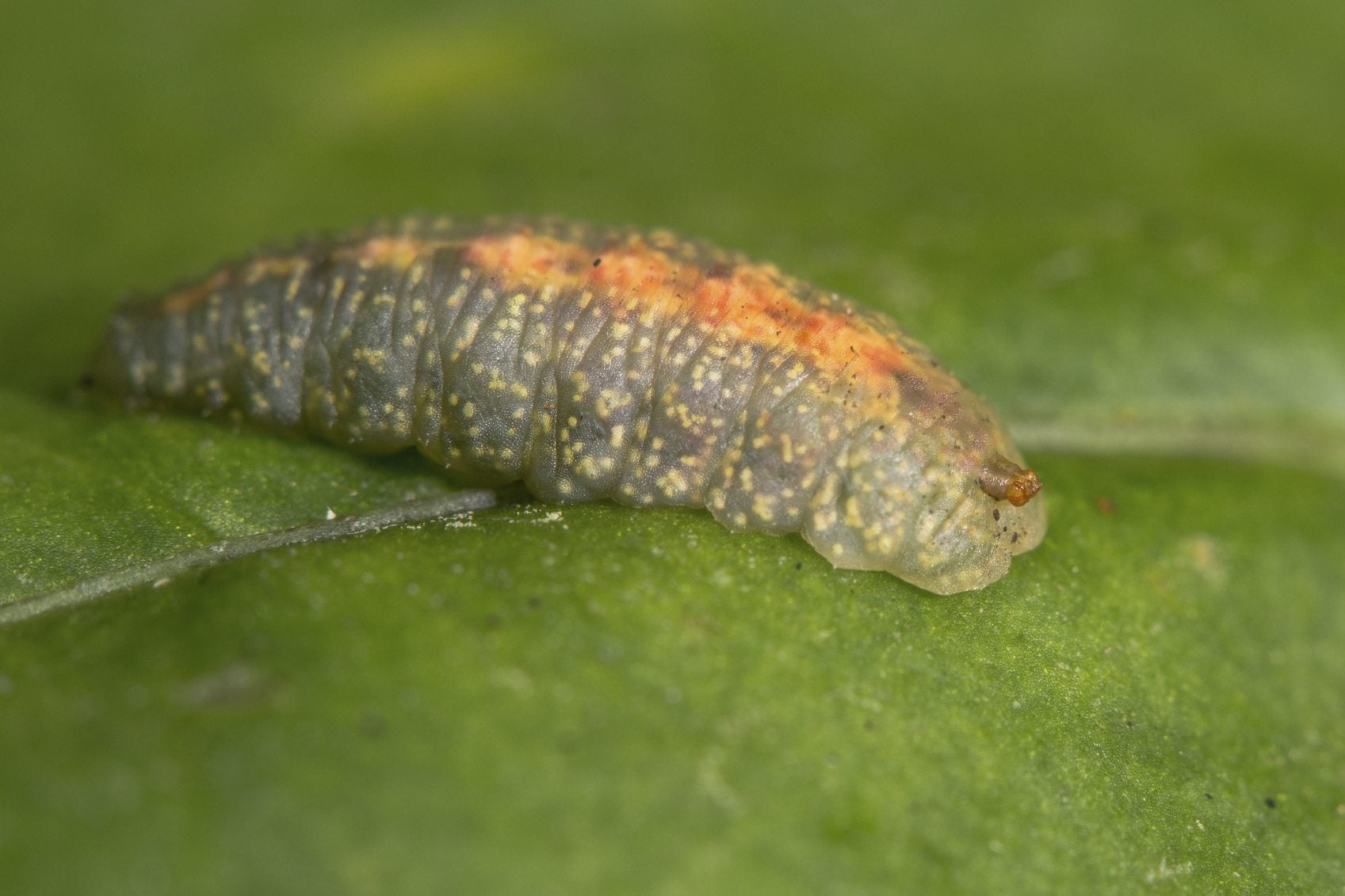
If your garden is prone to aphids, and that includes many of us, you might want to encourage syrphid flies in the garden. Syrphid flies, or hoverflies, are beneficial insect predators that are a boon to gardeners dealing with aphid infestations. It is helpful to know a bit about hoverfly identification to determine if these welcome insects are present in your garden and to promote hoverfly egg-laying. The following article will help you to identify and encourage syrphid fly eggs and hoverfly larvae.
Hoverfly Identification
Hoverflies are also known as syrphid flies, flower flies, and drone flies. They are prolific pollinators and also feed on insect pests, specifically aphids. They will also feed on other soft-bodied insects such as thrips, scales, and caterpillars. Their name, hoverfly, is due to their unique ability to hover in midair. They can also fly backward, a feat that few other flying insects possess. There are several varieties of syrphid flies, but all reside in the order Diptera. They look like small wasps with black and yellow or white striped abdomens, but they don’t sting. Looking at the head will help you to determine if you are viewing a hoverfly; the head will look like that of a fly, not a bee. Also, hoverflies, like other fly species, have two sets of wings versus the four that bees and wasps have. This disguise is thought to help the syrphid to evade other insectivores and birds that avoid eating stinging wasps. Ranging in size from ¼ to ½ inches (0.5 to 1.5 cm.), the adults are the pollinators, while it is the hoverfly larvae that consume the pest insects.
Hoverfly Egg Laying Cycle
Syrphid fly eggs are often found around aphid colonies, an immediate food source for the emerging larvae. The larvae are small, brown, or green maggots. When populations of hoverflies are high, they can control 70-100% of an aphid population. Flies, including hoverflies, metamorphosis from egg to larvae to pupae to an adult. Eggs are oval, creamy white, and hatch in 2-3 days during the summer and in 8 days in the southern United States during the winter months. Females can lay up to 100 eggs during their lifetime. There are usually 3-7 generations per year. Emergent larvae are legless worms, dull green and smooth, with two long white stripes of ½ inch (1.5 cm.) in length. Larvae immediately begin feeding, grasping the aphids with their jaws and draining the body of vital fluids. Don’t use insecticides or even insecticidal soaps when larvae are present. When hoverfly larvae are ready to pupate, they attach themselves to a leaf or twig. As the pupa evolves, it changes in color from green to the color of an adult. Pupae usually overwinter in the soil or under fallen leaves.
Syrphid Flies in the Garden
While adult flies are beneficial in their role as pollinators, it is the larval hoverfly stage that is most beneficial for the relief of pests. But you need to encourage the adults to stick around and produce these offspring. To encourage the presence and subsequent mating of syrphid flies, plant a variety of flowers. Some of these might include:
Plant those that bloom continually from the last frost to the first frost or rotate to ensure continual blooming. Winged adults are at their most active during the warm months when they use the flowers as not only energy but as mating sites.
Sign up for the Gardening Know How newsletter today and receive a free copy of our e-book "How to Grow Delicious Tomatoes".

Amy Grant has been gardening for 30 years and writing for 15. A professional chef and caterer, Amy's area of expertise is culinary gardening.
